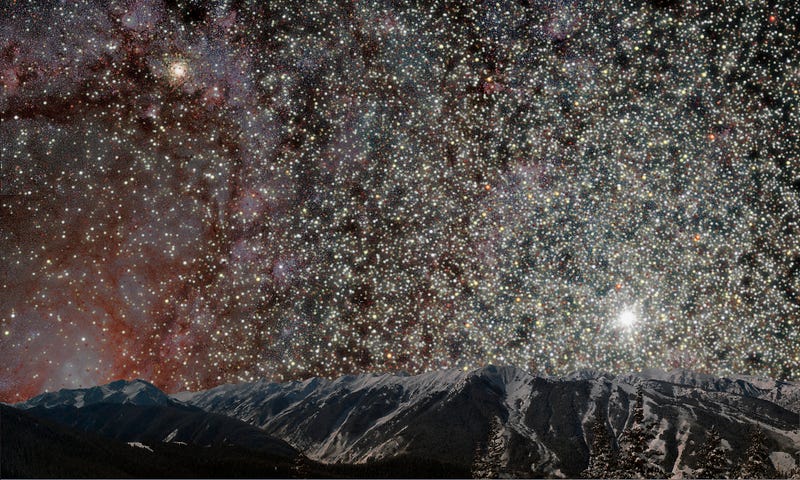Looking at today's APOD, I'm reminded of the only time I have ever looked at a globular cluster through a telescope. As a Color Commentator who gets a huge kick out of the colors of the universe, especially the tints of blue, I was very disappointed at the sight of M13. It was all white, with the faintest tinge of sickly green. I've never wanted to look at a globular cluster through a telescope again.
At first I thought that today's APOD looked much like that, but after I've looked at the full size image I have changed my mind. The stars in today's APOD do have colors, at least some of them. (And it is absolutely right that some of them
should look colorless, because many stars in Omega Centauri are similar to the Sun in their temperature, and they are therefore white to our eyes.)
I like the subtle colors of the blue stars of Omega Centauri, and I believe that this is the "true color" of them. They are "blue horizontal branch stars", and while they are blue, they are not all that bright. The blue horizontal branch stars are no brighter than RR Lyrae stars, and some of them are fainter. And the RR Lyrae stars are typically no brighter than 30-50 times that of the Sun.
Admittedly it is hard to know how blue the "typical" blue horizontal branch stars really are. The bluest stars in the diagram at right seem to have a B-V index of -0.8 or so, which is absolutely crazily blue and utterly unlike anything you can find in the more nearby and more metal-rich stellar populations. One of the stars with the very bluest B-V index in the nearby universe is Mu Columba, whose B-V index is -0.274 ± 0.013. You can't even compare that with a B-V index of -0.8. Of course, the blue horizontal branch stars in Omega Centauri are extremely metal-poor, and this just might give them a bluer B-V index, for all I know. (But I still can't believe that a star can be as blue as -0.8, and I don't even believe in a star with a B-V index of -0.5. Sorry.)
In any case, the stars of Omega Centauri must definitely be dust-reddened to some extent. So whatever their "true" B-V index might be, the light that reaches us from these stars here on Earth can't possibly be a lot bluer than, say, -0.2. There are various ways to portray a color like that, but there is a delicate subtlety in showing it as something very pale. And certainly, when I have looked at blue stars through a telescope, many of them have looked blue, but most of them have been quite pale in color, not unlike the car at left.
So what about the "red" stars? Aren't they red, or at least orange, or at least deeply yellow-orange? Not in my opinion, no. Most of them were just yellow, some of them a quite
pale shade of yellow, when I last looked at them through a telescope.
So I appreciate the pale, subtle colors of the stars of today's APOD.
Ann
 Star Cluster Omega Centauri in HDR
Star Cluster Omega Centauri in HDR



